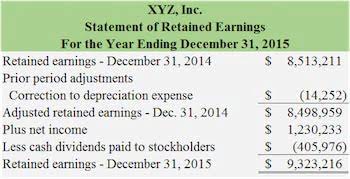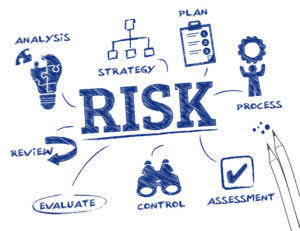LO 2.3Explain the purpose of the statement of cashflows and why this statement is needed. LO 2.1Identify the correct components of theincome statement. LO 2.3Prepare a balance sheet using the following information for the Ginger Company as of March 31, 2019.
- LO 2.3Prepare a balance sheet using the followinginformation for the Ginger Company as of March 31, 2019.
- An increase to an account on the left side of the equation (assets) is shown by an entry on the left side of the account (debit).
- The shareholders’ equity number is a company’s total assets minus its total liabilities.
- LO 2.3Prepare a statement of owner’s equity using the information provided for Pirate Landing for the month of October 2018.
What Is Shareholders’ Equity in the Accounting Equation?
There are no exceptions to this rule, even though some accounts may seem to have strange rules at first. These withdrawals are recorded as debits, because they decrease equity. This straightforward relationship between assets, liabilities, and equity freshbooks vs quickbooks is considered to be the foundation of the double-entry accounting system. The accounting equation ensures that the balance sheet remains balanced. That is, each entry made on the debit side has a corresponding entry (or coverage) on the credit side.
What Is a Liability in the Accounting Equation?
In the double-entry system, every transaction affects at least two accounts, and sometimes more. This concept will seem strange at first, but it’s designed to be a self-checking system and to give twice as much information as a simple, single-entry system. Shareholders’ equity is the total value of the company expressed in dollars.
The Rules of Debits and Credits
This number is the sum of total earnings that were not paid to shareholders as dividends. Accounts receivable list the amounts of money owed to the company by its customers for the sale of its products. Assets include cash and cash equivalents or liquid assets, which may include Treasury bills and certificates of deposit.
Module 3: Recording Business Transactions
LO 2.2For the items listed below, indicate how theitem affects equity (increase, decrease, or no impact. That is, if the account is an asset, it’s on the left side of the equation; thus it would be increased by a debit. If the https://www.quick-bookkeeping.net/ account is a liability or equity, it’s on the right side of the equation; thus it would be increased by a credit. LO 2.2For the items listed below, indicate how the item affects equity (increase, decrease, or no impact.
LO 2.1Each of the following situations relates toa different company. LO 2.2Identify/discuss one similarity and onedifference between tangible and intangible solved menlo company distributes a single product. the company’s assets. On October 1, Nick Frank opened a bank account in the name of NeatNiks using $20,000 of his own money from his personal account.
Although the balance sheet always balances out, the accounting equation can’t tell investors how well a company is performing. If a business buys raw materials and pays in cash, it will result in an increase in the company’s inventory (an asset) while reducing cash capital (another asset). Because there are two or more accounts affected by every transaction carried out by a company, the accounting system is referred to as double-entry accounting. Assets represent the valuable resources controlled by a company, while liabilities represent its obligations.
Identify two stakeholder groups, andexplain how each group might use the information contained in thefinancial statements. These may include loans, accounts payable, mortgages, deferred revenues, bond issues, warranties, and accrued expenses. LO 2.2For the items listed below, indicate how theitem affects equity (increase, decrease, or no impact).
LO 2.3Prepare an income statement using thefollowing information for CK Company for the month of February2019. LO 2.1For each independent situation below,calculate the missing values for Owner’s Equity. LO 2.3Prepare a balance sheet using the followinginformation for the Ginger Company as of March 31, 2019. LO 2.3Prepare an income statement using thefollowing information for DL Enterprises for the month of July2018. LO 2.1For each independent situation below,calculate the missing values.
LO 2.1Choose three stakeholders (or stakeholdergroups) for Walmart and prepare awritten response for each stakeholder. In your written response,consider the factors about the business the particular stakeholderwould be interested in. Consider the financial and any nonfinancialfactors that would be relevant to the stakeholder (or stakeholdergroup). Do some researchand see if you can find support for your points. LO 2.1Each situation below relates to anindependent company’s Owners’ Equity. LO 2.3Prepare a balance sheet using the followinginformation for Mike’s Consulting as of January 31, 2019.
The accounting equation helps to assess whether the business transactions carried out by the company are being accurately reflected in its books and accounts. Some accounts are increased by a debit and some are increased by a credit. An increase to an account on the left side of the equation (assets) is shown by an entry on the left side of the account (debit). An increase to an account on the right side of the equation (liabilities and equity) is shown by an entry on the right side of the account (credit). The accounting equation is based on the premise that the sum of a company’s assets is equal to its total liabilities and shareholders’ equity.
There is no minus sign because we never reduce that account. Textbook content produced by OpenStax is licensed under a Creative Commons Attribution-NonCommercial-ShareAlike License . Think of retained earnings as savings, since it represents the total profits that have been saved and put aside (or “retained”) for future use. The major and often largest value assets of most companies are that company’s machinery, buildings, and property. These are fixed assets that are usually held for many years. LO 2.3For each of the following ten independenttransactions, provide a written description of what occurred ineach transaction.
LO 2.2For each of the following items, identifywhether the item is considered current or noncurrent, and explainwhy. LO 2.1Identify the four financial statements anddescribe the purpose of each. LO 2.3Prepare a statement of owner’s equity using the information provided for Pirate https://www.quick-bookkeeping.net/learn-the-basics-of-closing-your-books/ Landing for the month of October 2018. LO 2.2For each of the following items, identify whether the item is considered current or noncurrent, and explain why. The accounting equation is a concise expression of the complex, expanded, and multi-item display of a balance sheet.
In other words, the total amount of all assets will always equal the sum of liabilities and shareholders’ equity. Essentially, the representation equates all uses of capital (assets) to all sources of capital, where debt capital leads to liabilities and equity capital leads to shareholders’ equity. LO 2.3Prepare a statement of owner’s equity usingthe following information for the Can Due Shop for the month ofSeptember 2018. LO 2.3Identify the order in which the fourfinancial statements are prepared, and explain how the first threestatements are interrelated. List twoexamples of business transactions, and explain how the accountingequation would be impacted by these transactions.





